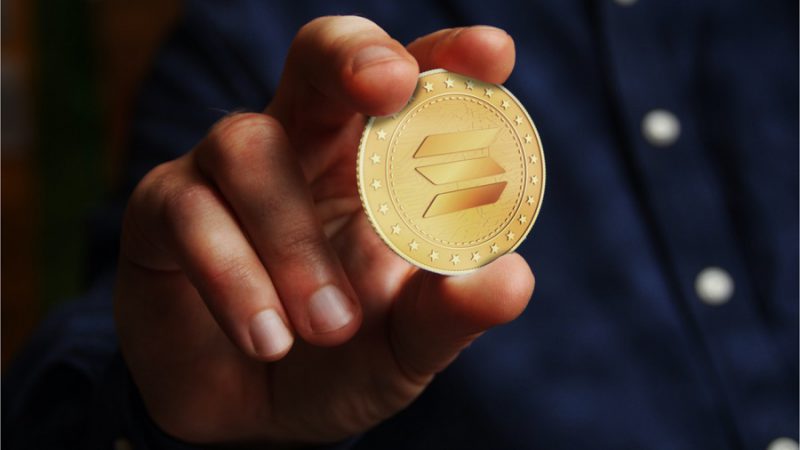If you’re new to crypto, Solana might have gone under your radar but not to worry. We are here to inform you of this fast-emerging project challenging the biggest names in crypto.
The Cryptocurrency linked to Solana-SOL is currently among the top ten largest cryptocurrencies. Moreover, there is optimism that the Solana blockchain could compete with Ethereum.
What is SOL
Solana is a web-scale, open-source blockchain protocol that supports developers and institutions worldwide to build decentralized applications (DApps) by creating fast lanes for transactions.
This blockchain provides the high-performance infrastructure necessary for tomorrow’s decentralized applications.
It scales with network bandwidth while also leveraging a set of breakthrough computational technologies that can support thousands of nodes to allow transaction throughput proportionally scale.
Solana uses a combination of proof-of-stake (PoS) and proof-of-history (PoH) consensus mechanisms to improve throughput and scalability.
As a result, the network claims it can process 50,000 transactions per second, making it one of the fastest blockchains!
Background of Solana
Anatoly Yakovenko, the founder of Solana, worked at Qualcomm before starting this project. His experience with working on compression algorithms.
While previously employed by Dropbox, it helped him create a new process for dealing with traditional throughput problems in blockchains like Bitcoin and Ethereum.
8 Unique Features of Solana
Proof of History (PoH) → a clock before consensus
Solana is an innovative new blockchain that lets you process transactions more efficiently and with a higher throughput rate than other blockchains. It does this by creating efficiency through its PoH consensus algorithm. This also helps create historical records of events or transactions. Consequently making it easier for the system to track transactions and keep their ordering in check.
Turbine → a block propagation protocol
Solana’s innovative Turbine protocol breaks data into smaller packets, increasing its overall capacity and settling transactions faster.
Gulf Stream → Mempool-less transaction forwarding protocol
The Gulf Stream protocol allows for a faster leader switching, reduces memory pressure on validators from unconfirmed transaction pools, and ultimately supports 50k TPS.
Sealevel → Parallel smart contracts run-time
Solana’s hyper-parallelized transaction processing engine lets transactions run concurrently across GPUs and SSDs.
This allows for a more efficient run-time, making it easier to scale horizontally – resulting in an overall better experience.
Pipeline → a Transaction Processing Unit for validation optimization
Pipelining is a process where input data can be quickly validated and replicated across all the nodes in a network.
This mechanism allows transaction information to flow smoothly through different hardware responsible for it without delays or issues.
Cloudbreak → Horizontally-Scaled Accounts Database
The Solana network will scale efficiently by using Cloudbreak. As the name suggests, this data structure is optimal for concurrent reads and writes across the network.
Archivers → Distributed ledger storage
Keeping in mind that data storage is a crucial part of the blockchain, storing the correct information is essential. Solana uses archivers for this purpose which are lightweight nodes periodically checked by other validators on-chain.
What is Solana Cluster
The Solana Cluster is a set of computers that are working together. They can be viewed from the outside as one system, but each computer within it acts independently.
Each Solana cluster comprises many independent systems owned by different people who often work with or against each other at any given time.
Some examples of how DLT can be used are to monitor which computers were significant in maintaining the cluster. Another may be using it for tracking real-world assets, such as possessions or vehicles.
One good thing about this is that anyone with a copy of the ledger will always have a replica even if its printing organization changes hands.
How Does Solana Work?
- Feed transactions to the Leader
- The Leader will plan the messages and arrange them efficiently to be processed by different nodes.
- The Leader then implements the transactions in the current state that stores them in the RAM.
- The Leader will publish the transaction and signature for verification.
- When verifiers receive confirmation, they will execute the duplicate transactions on their copies of state and publish signatures if it gets confirmation.
- Published confirmations will then serve as votes for the consensus algorithm.
Conclusion
Solana is a new blockchain technology that promises to solve many of the issues earlier blockchains have faced. It uses an entirely new structure for verifying transactions and has a more efficient consensus algorithm which will make it stand out among other cryptocurrencies like Bitcoin or Ethereum. With its strong development so far, you should keep your eye on Solana in 2021!





